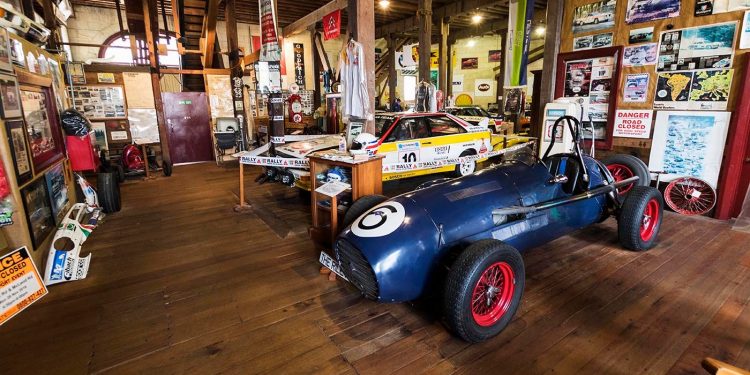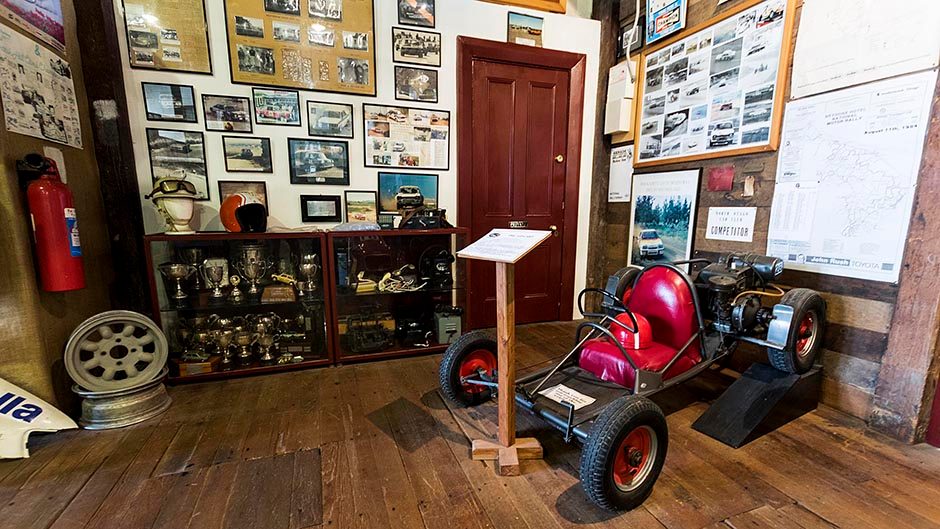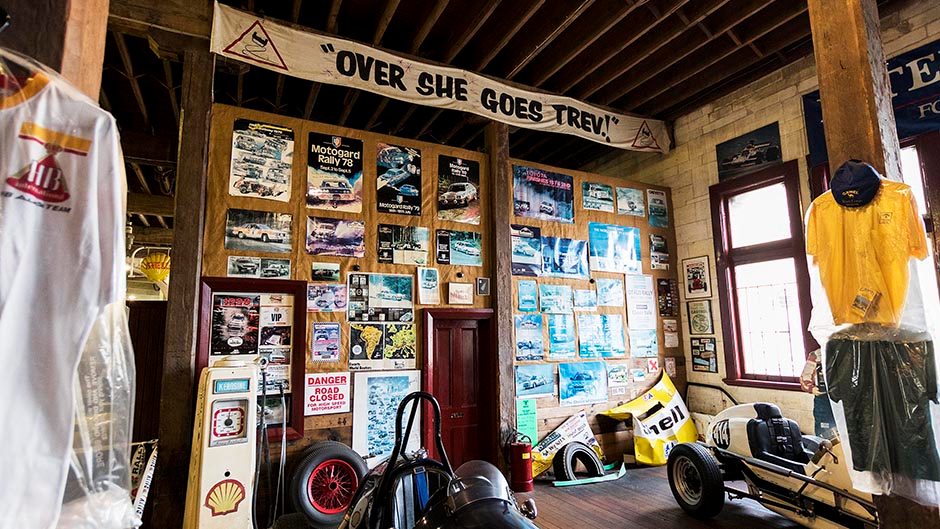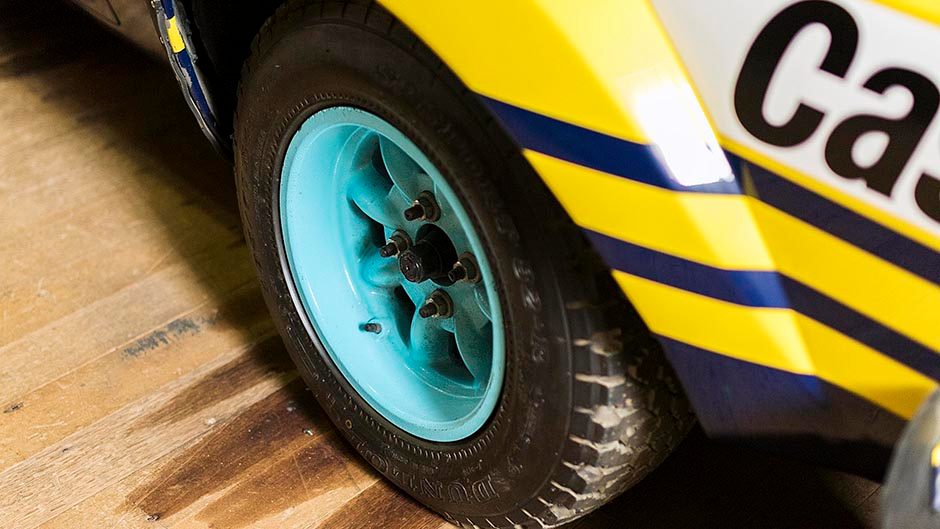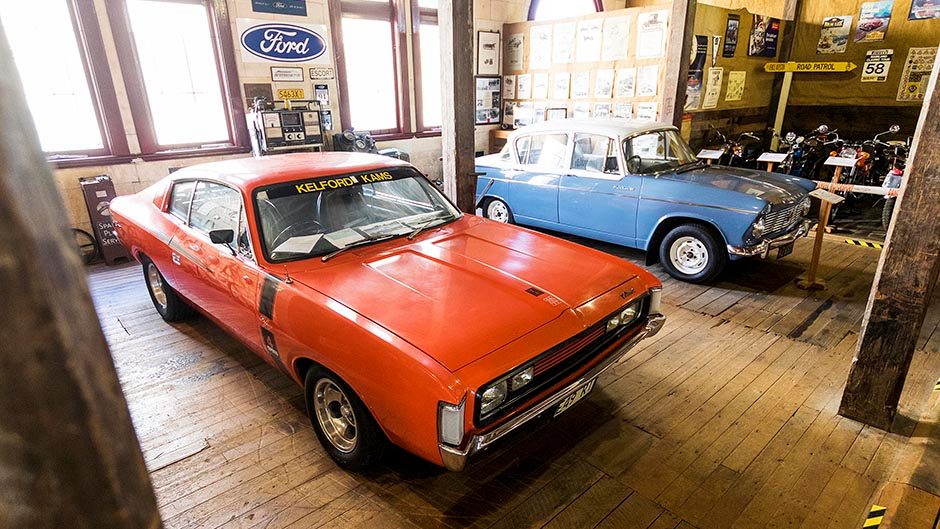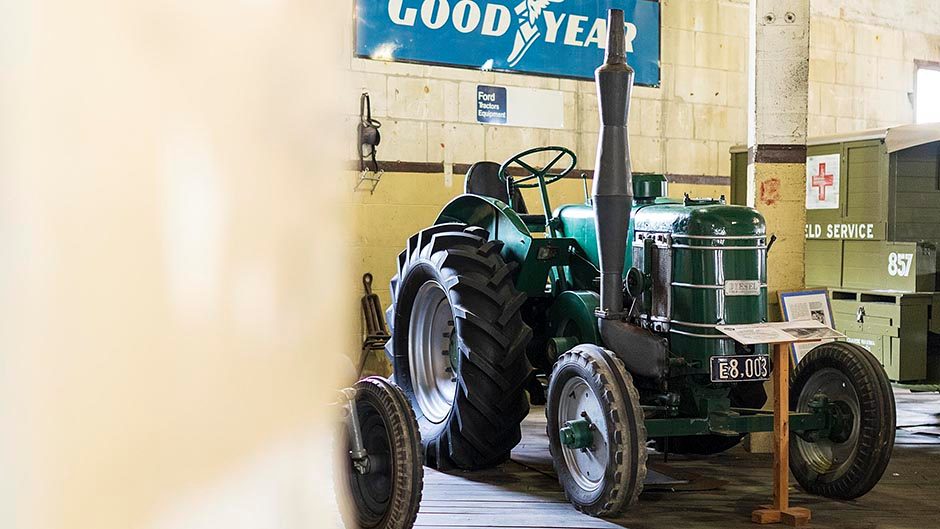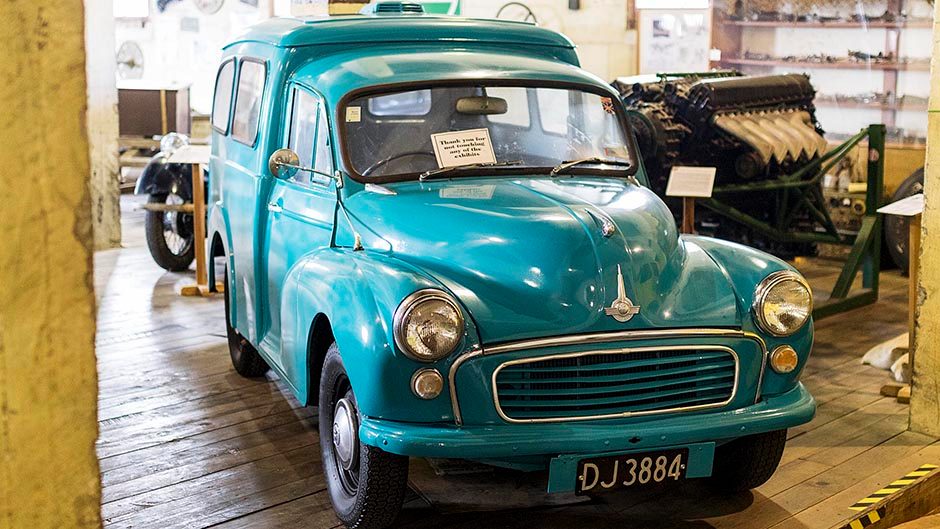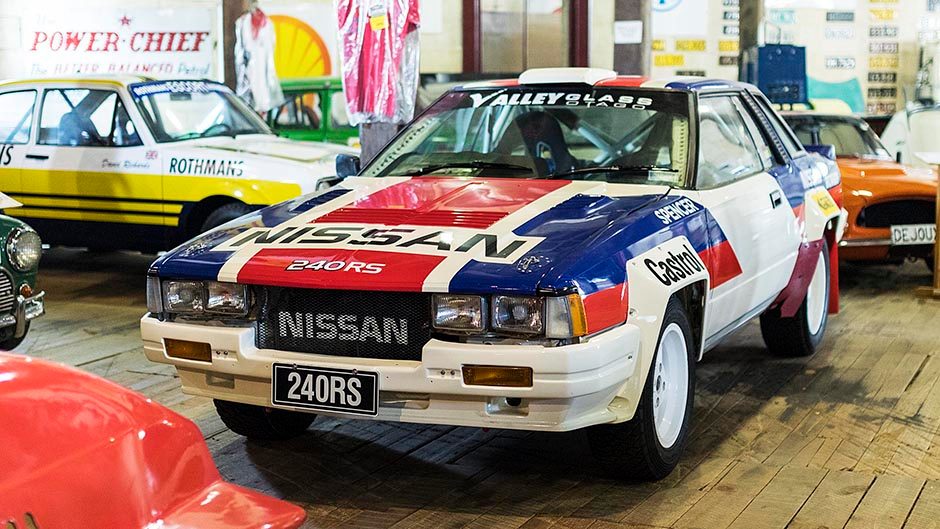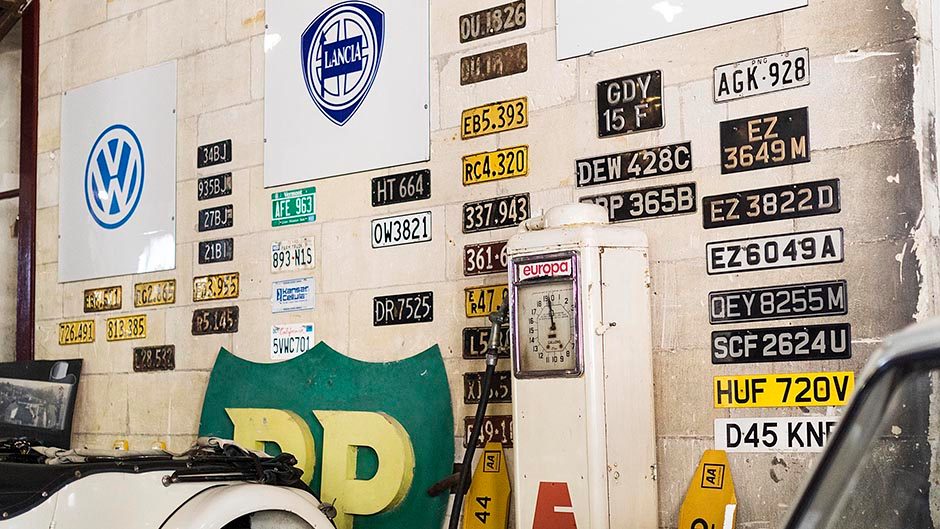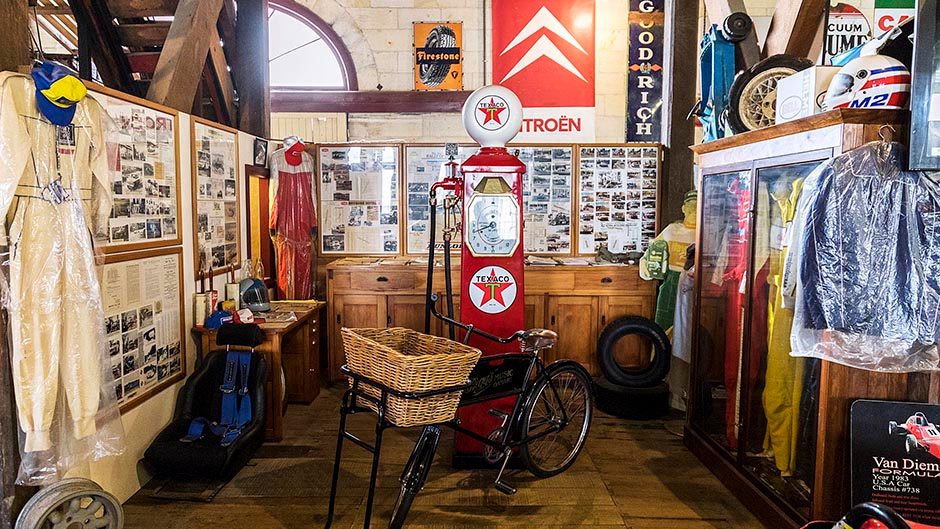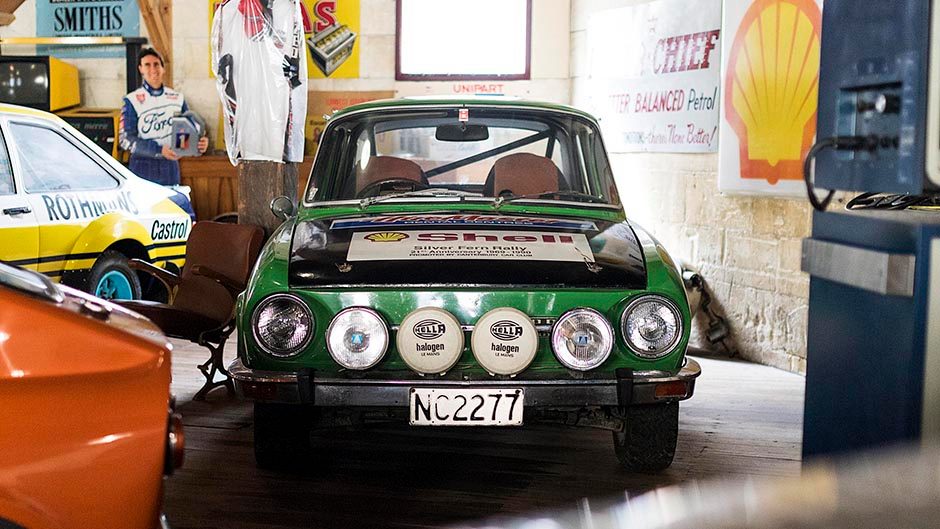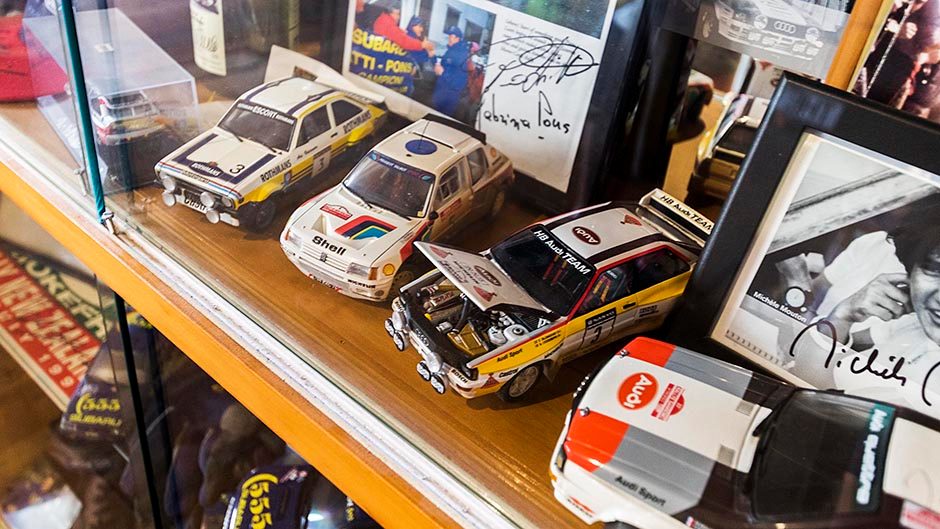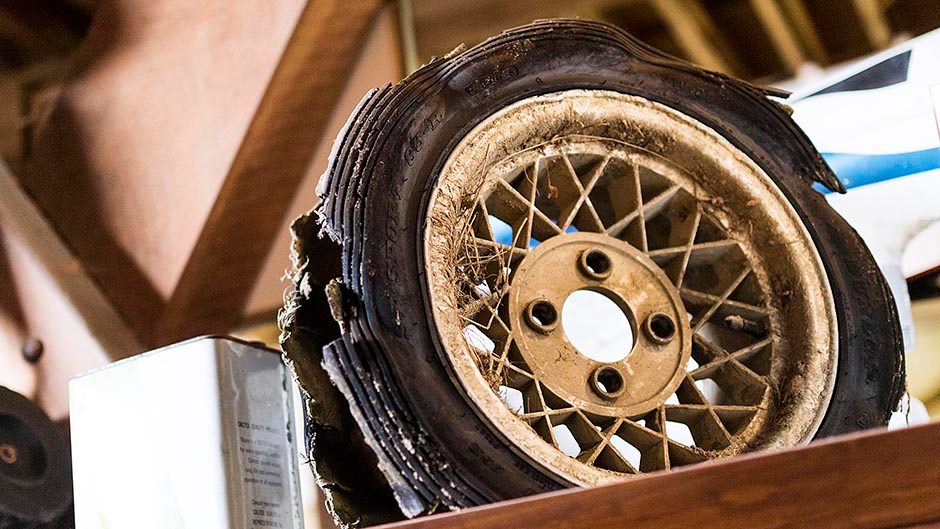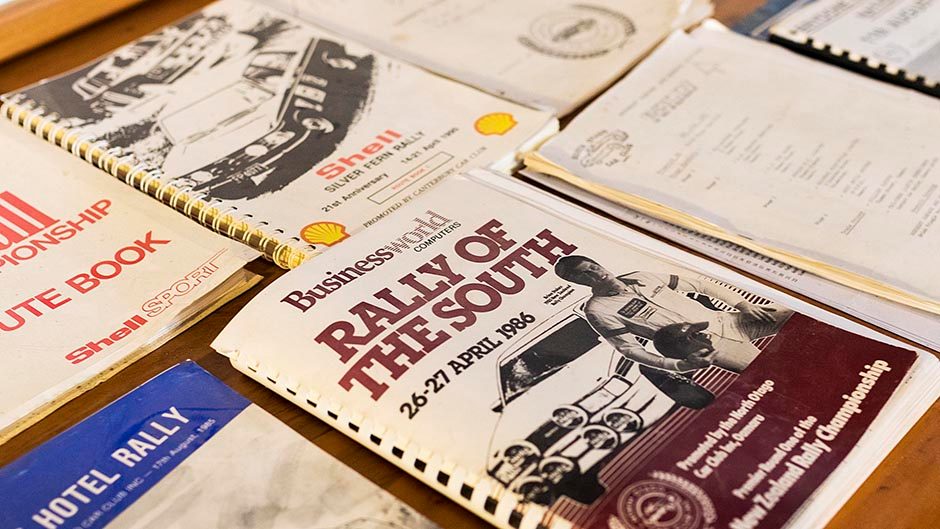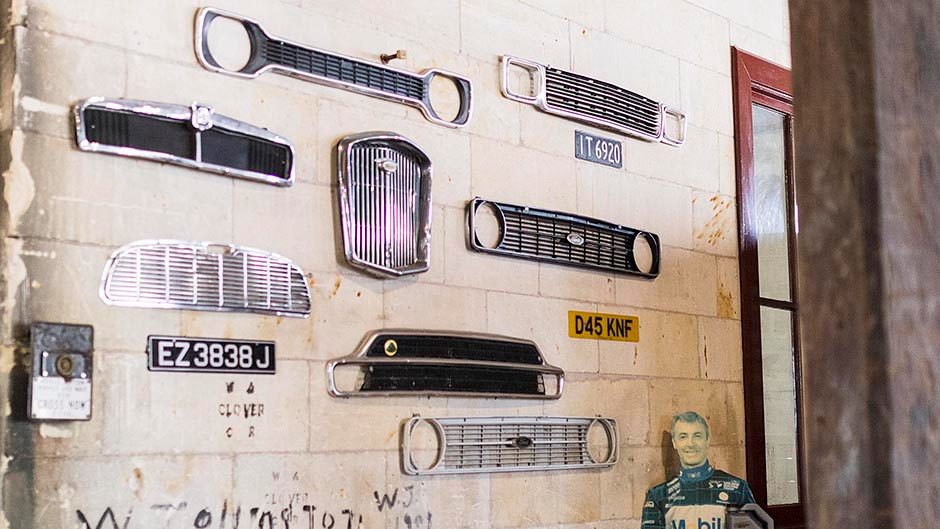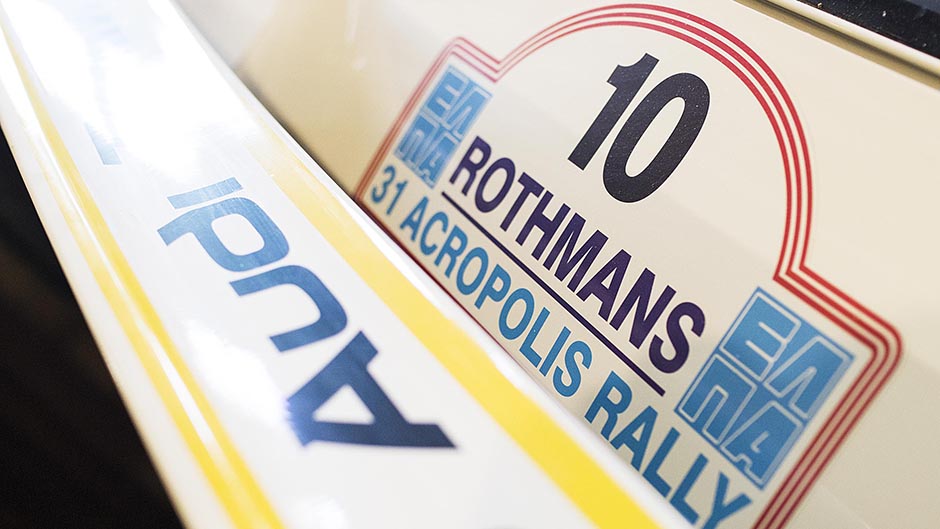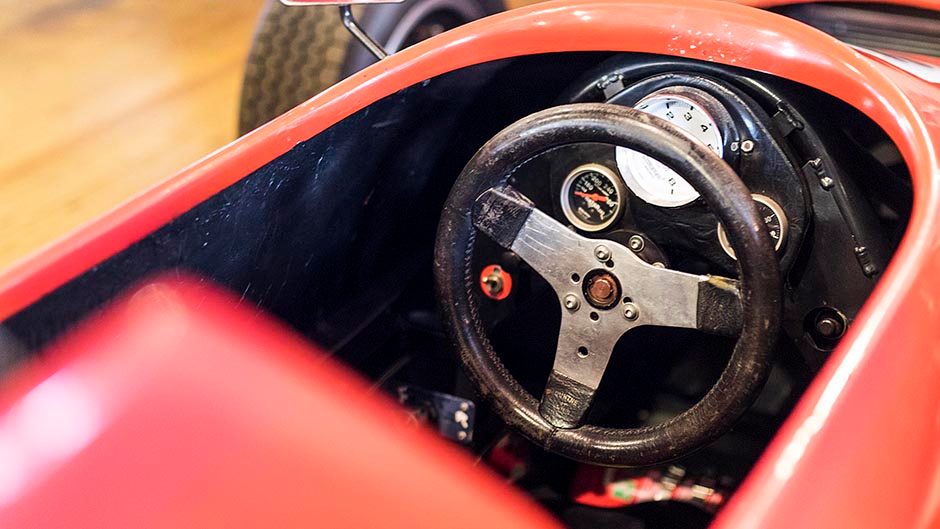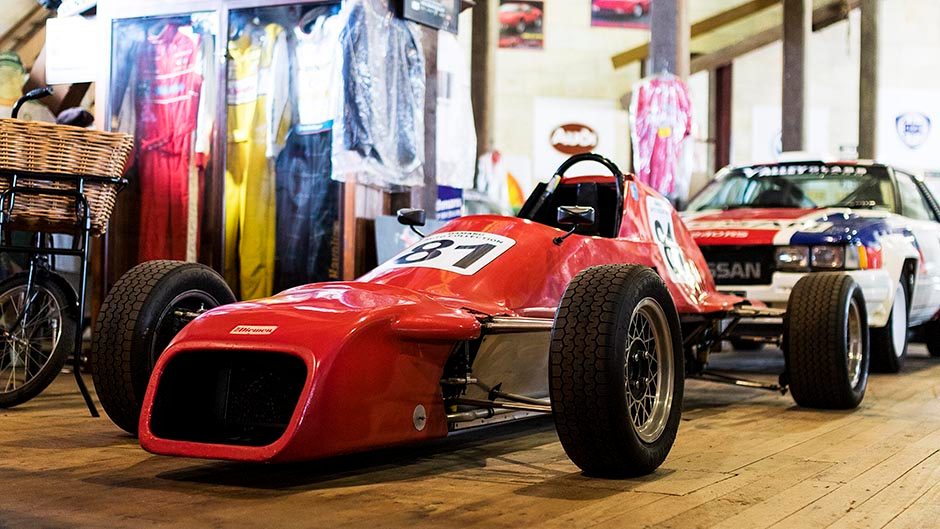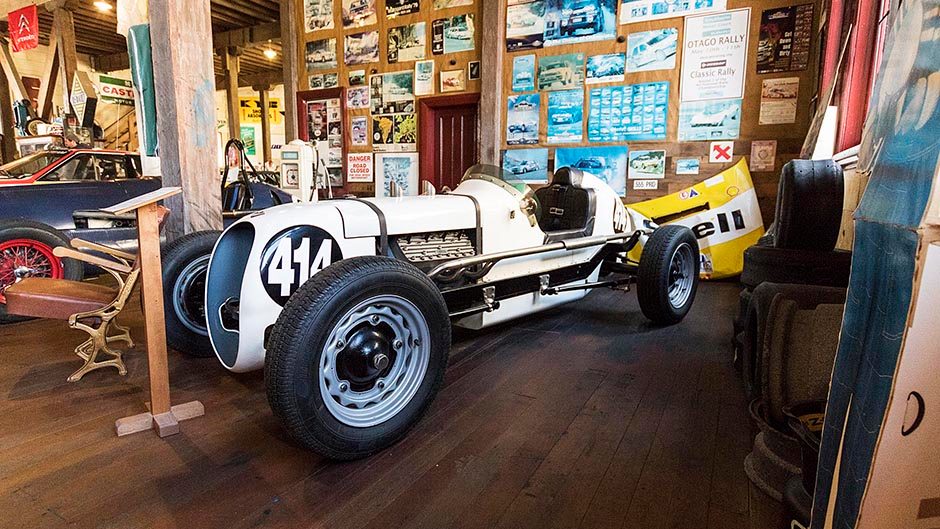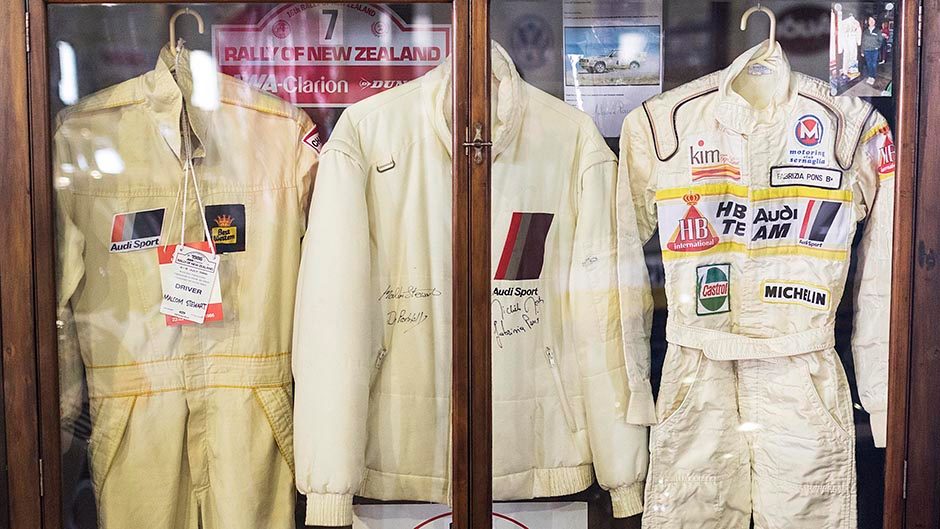The Oamaru Autocollection – Southern collectioneering
Words Richard Opie | Photos Richard Opie
While some kiwi automotive collections can beat it for sheer size, the Oamaru Autocollection punches far above its weight. For what it seems to lack in size this collection compensates in stories and passion, making it a must-visit on the south island’s east coast.
Oamaru, nestled on the border of Otago and Canterbury, is one of those iconic Kiwi towns that deserves a little more adulation than it receives. The South Island offers such an extensive smorgasbord of natural and historic attractions that small towns such as Oamaru can be overlooked. But sitting smack bang on our number one national highway, Oamaru is one of those places that is simply endearing.
It’s that small-town New Zealand, and down to earth South Island frankness that a few years ago drew my partner Bex and I to investigate the place further. At the time we were trekking around the South in an early 1970’s Datsun 260C, one of those trips where the schedule was fairly loose. Overnight stays were decided on a whim. Having reached the bottom of the island following a descent down the West coast, we were making our way up the Eastern side. The light was dimming as we approached Oamaru. Stopping in the main street to get our bearings, we thought we’d give the town a crack and booked into a wee B&B.
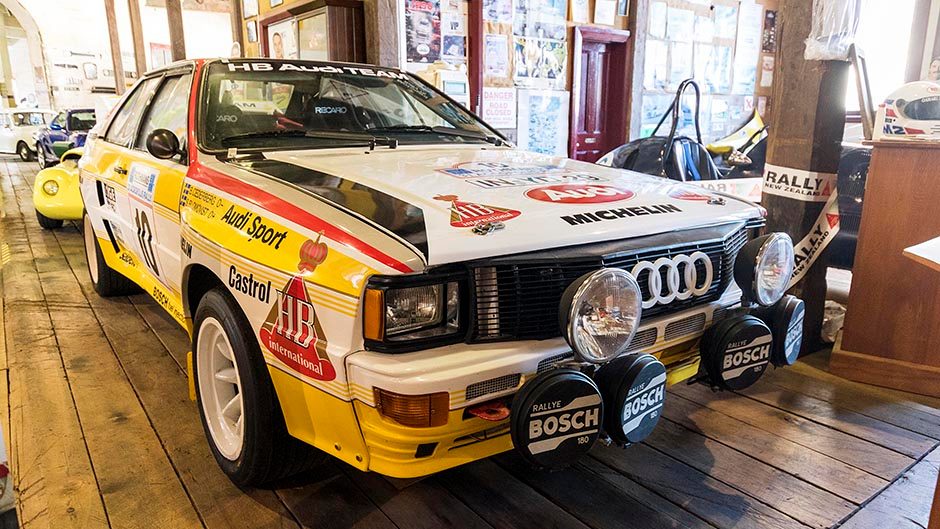
The next day was dedicated to exploring. While wandering around doing the “Aucklander-lost-in-Otago” thing, sampling local cafes and generally stumbling around gawking, we happened upon the Historic Precinct. Now if you’re wanting to check out some Victorian-era architecture, the experience located along Oamaru’s Tyne and Harbour Streets is total immersion. Characterised by the creamy-beige tones of the locally produced limestone, it’s a step back to early New Zealand colonial history, preserved so others may come to educate, or even reminisce.
What I totally did not expect was a small sign displaying “Oamaru AutoCollection,” affixed to number 1 Tyne Street. Naturally, I couldn’t not investigate and after handing over the modest $10 entry fee I wandered through the accompanying gift-shop doors and into an unexpected wonderland. Almost four years later to the day, I wandered back through those doors. This time however I was carrying a camera, and armed with a swag of queries for Allan Wills and Carol Scott, the building owners and proprietors.
Built in 1881, the Woolshed Complex’s previous life saw it play host not to cafes and gift shops but, originally, storage, in particular for grain and wool. For over a century the building housed raw produce from the region. In fact, my finely tuned nose courtesy of a rural upbringing still picks out the faint lanolin odour hanging about the native timber framework.
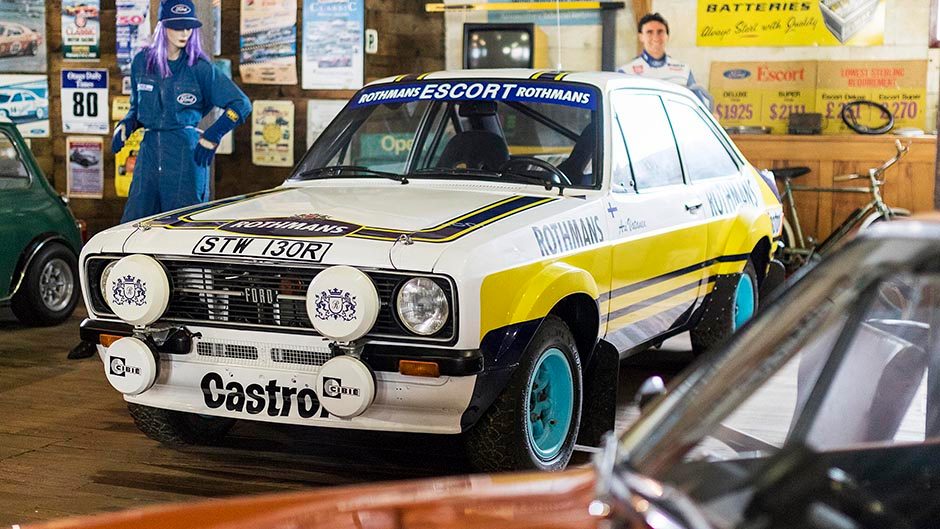
But, I digress. Around 25 years ago, Carol and Allan purchased the building armed with a dream. The complex now houses a café and souvenir shop, while the car collection has become the focal point of their life, a contribution of some very different history to the Historic Precinct. Motorsport and cars have been a part of life since Allan can remember. First, trolley racing as a kid, sideways down gravel races, then he became hooked on cars after a visit to a standing quarter-mile event as a teenager.
Progression through to car club-run events, particularly hill climbs, led eventually to a tenure as a rally driver. Describing the club rallying scene of the ‘70’s almost as a social experience – with an emphasis on adventure – Allan drove throughout the Heatway glory days of the mid-to-late 1970s. At the wheel of a twin-cam 1972 Escort, Allan contested one of the truly epic internationals in 1976 alongside some of the greats, both local and offshore.
With special stages totalling over 1500km these were marathons compared with contemporary events, but in Allan’s instance cemented a passion for rallying, and that’s evident the moment you first step into the display area. Immediately striking is the collection of motorsport memorabilia adorning the walls. Rough sawn timber now plays host to posters, signage and car parts spanning the decades. High on the wall adjacent to the collection entrance is a slender white banner paraphrasing the late John Clarke with “Over She Goes, Trev” in bold text.
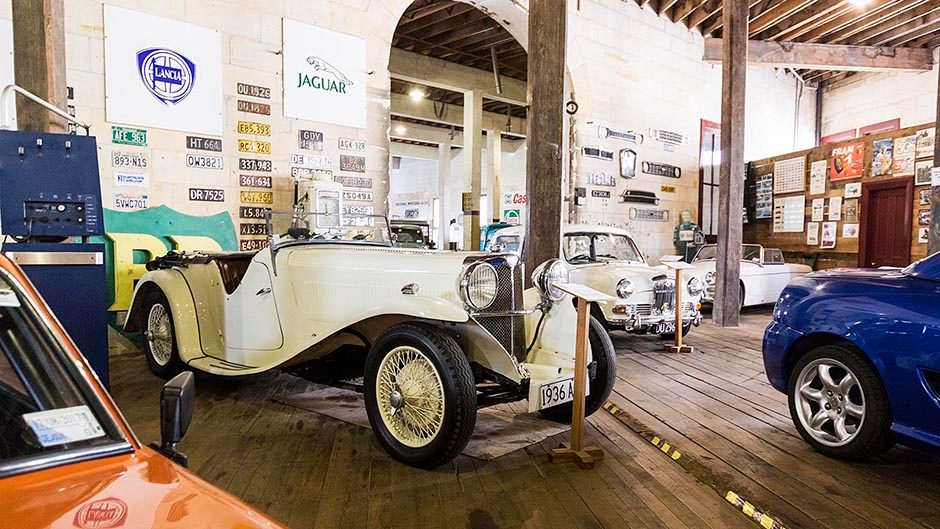
Without the stylised icon of an overturned rally car the banner may not have made sense. It’s a wonderful reminder of the Kiwi passion for motorsport without ever taking things too seriously – the banner was once situated at the same corner on every international rally, a site notorious for off-course mishaps. Donated around 15 years ago by a visitor, the sign adds to the story told within the woolshed walls. Promotional posters and banners for almost any Rally New Zealand you care to mention tell a tale of rallying through the ages, an evolution of the sport posted on weathered paper.
It’s a trip down memory lane for some, and an educational experience for others. Collected throughout the duration of Allan and Carol’s association with the sport, the collection has also drawn the attention of past rallying greats. Autographs adorn many of the posters, with past rally champions visiting the collection, often while in New Zealand for the Otago classic rally. Names like British champion Russell Brookes, Jimmy McRae, Michele Mouton, Didier Auriol and Bjorn Waldegaard have all perused the collection, enriching the stories contained within Allan and Carol’s collection. While Carol’s favourite piece of memorabilia is a pair of personally gifted race boots, signed by Colin McRae following the 1994 Rally NZ, Allan’s favourite aspect of curating the collection isn’t a piece on display.
Rather, it’s the opportunity to speak with some of the sport’s past heroes. He got to chat with Ari Vatanen over a cuppa, and revels in the stories of a period past. If you’re lucky enough to catch Allan while perusing the collection, he’ll take you on a memorabilia tour, recounting the stories and adding far more value than the paltry admission fee.
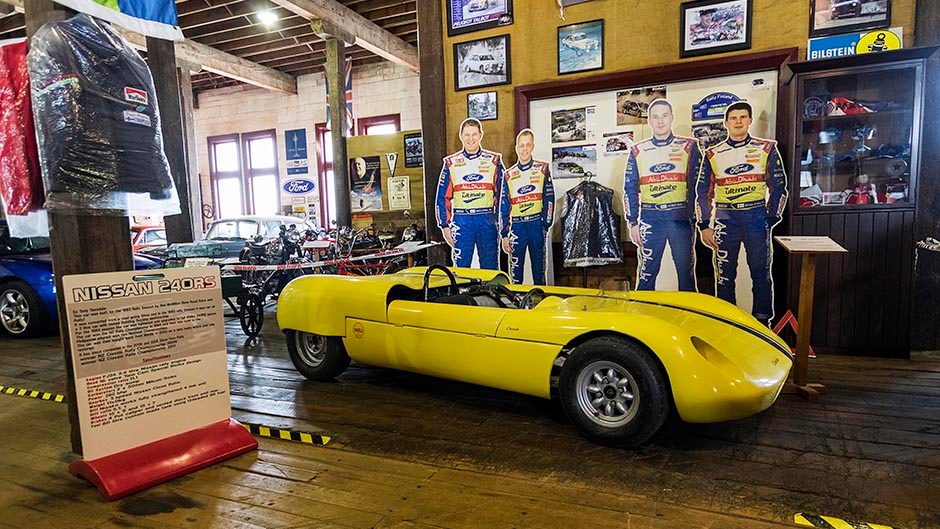
It’s not strictly posters – there are vintage route books, programmes, newspaper clippings, car parts (all of which bear a competition patina) and apparel. Safely ensconced in a glass cabinet is a pair of Fabrizia Pons’ Audi-Sport race overalls, while nearby is the 1984 Audi Quattro A1, a vehicle similar to the machines she co-drove alongside Mouton during the Group B era. More on that Audi later, but the collection of vehicles inside doesn’t disappoint. It contains a revolving selection of around 30 machines at any given time. The number is kept low enough to allow the vehicles space to breathe, and visitors room to walk around and inspect all aspects of the cars.
And there’s plenty of variety. Catching the eye on entrance is a pair of New Zealand-built specials, like the Ransley Riley, a supercharged 2.5 litre Riley Pathfinder-powered creation of 1953. Having never competed outside of the South Island the special resides alongside the flathead V8-powered Stewart special, built in Christchurch around the same period. From these two, the motorsport journey through the collection progresses chronologically. A championship winning ex-Tony Teesdale Nissan 240RS Group B machine sits perpendicular to an early Mini Cooper S, while the 1970s are represented by a Skoda 110L and an E49 Charger production racer.
The Charger is particularly notable, being a production car winner in the hands of Ron Rutherford in 1973 and retains its original form. A segment of road-going history is also on display. Represented are Kiwi classics like the Morris Minor van, an Austin A30 rub shoulders with an accurate Model T army ambulance replica – one of only two on the planet – and there’s the imposing form of a 1948 Field Marshal tractor powered by a monster single-cylinder diesel. The gorgeous, swooping form of the 1936 AC Sports Tourer, possibly the only example of its kind in the country, also deserves a mention. A posse of 1960s and 1970s motorcycles adds two-wheeled flavour, but perhaps the exhibit that really underlines the breadth of the collection is the Rolls Royce Merlin aero engine, tucked towards the rear of the building. Elegant in its brutality, the Merlin engine is the stuff of legends.
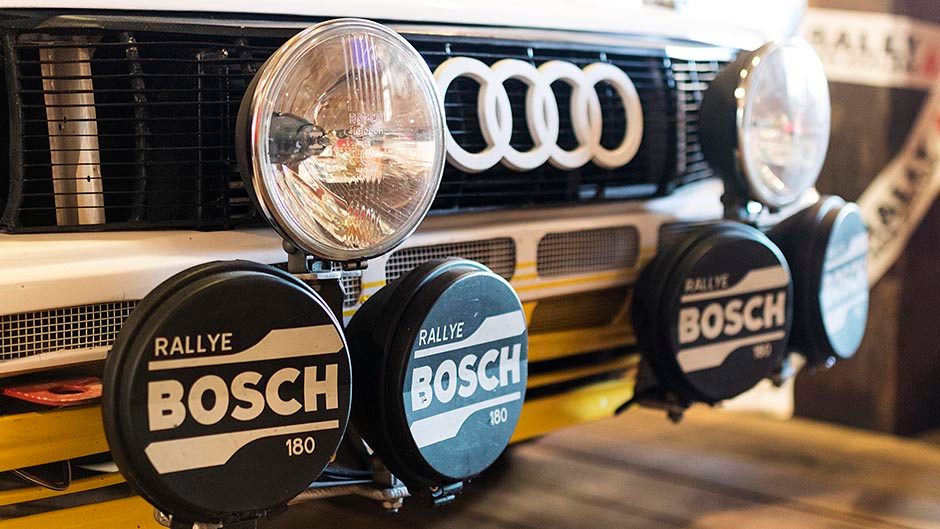
This particular stand-mounted engine is on loan from a generous owner whose only stipulation was to allow the public access around it so they could pore over the finer details. As Allan rightly says “who’d expect to find a Merlin in a car collection?” Allan’s own vehicles do get out and about from time to time. Active again in the occasional classic rally, he campaigns a 500SLC Mercedes Benz inspired by the works cars of the early 1980s in classic rallying, a Van Dieman RF83 Formula Ford in the occasional historic circuit event and of course the mighty Quattro makes its way out for the odd demo run. It’s a compilation that offers something for almost all tastes in vehicles, and one that also caters for anyone with an interest in motorsport and cars. The revolving nature means the line-up is ever-changing, with around two-thirds of the display vehicles owned by Allan and Carol themselves.
Generous owners also loan vehicles for display on occasion, meaning that on the second visit the Oamaru AutoCollection experience is a little bit different for the first. But best of all, it’s totally in keeping with that Oamaru experience. Genuine hospitality, genuine enthusiasm for the region and its history. And it’s a little bit under the radar, something of a hidden gem within a hidden gem of a town. Next time you’re passing through, put aside a couple of hours (trust me, you’ll need that long) to check out the collection and add to the stories contained within the limestone walls of the Woolstore Complex.
It’d be rude not to profile the star of the collection. In 1980 the rallying world was flipped on its head by the introduction of the ‘UR’ Audi Quattro. Notably, the Quattro featured Audi’s permanent four-wheel drive system, a drive layout that previously had promised much but delivered little in world motorsport. Audi made it work. Ingenious use of a center differential split the torque in a manner more useful than systems past, endowing the Quattro with prodigious traction on slippery rally stages. With a 370hp 2.1-litre five-cylinder turbo, the Quattro heralded the Group B era of rallying.
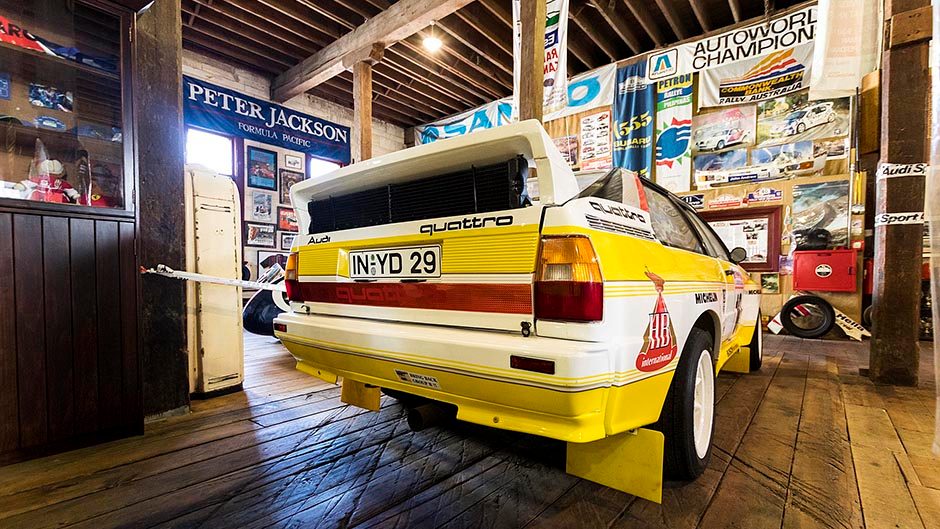
The last of the long wheelbase cars, this ‘A2’ evolution saw action in the hands of Stig Blomqvist, winning the Acropolis Rally, and Hannu Mikkola who took third in that year’s Rally NZ. For 1985, Kiwi rally regular Malcolm Stewart brought the car to New Zealand with the assistance of Audi NZ, campaigning successfully for a number of years. Towards the end of his tenure, Malcolm restored the car to 1984 works specification. Around nine years ago Allan became its custodian, and while the car isn’t eligible to compete due to its alloy roll cage, it still gets out into the open every so often for demonstration runs.
Would any collection of rallying machinery be complete without the inclusion of an Escort? The Mark II’s rally success has few peers, with a winning record spanning six years between 1975 and 1980. The list of drivers who have won in an Escort reads like a rallying hall of fame; Mikkola, Brookes, Vatanen, Clark and Waldegaard among the champions who took Escorts to WRC victory. The front-engine, RWD layout is relatively simple, with a live axle rear and MacPherson strut fronts forming the basic chassis arrangement.
Engine wise, works Escorts made use of the BDA twin-cam family beginning with BDE 1.8-litre, culminating with the 2.0-litre BDG alloy block variant by the end its days as a works car. This genuine works car boasts an impressive competition history, built by Ford’s Boreham competition department and winning the 1977 Acropolis Rally in the hands of Bjorn Waldegaard.
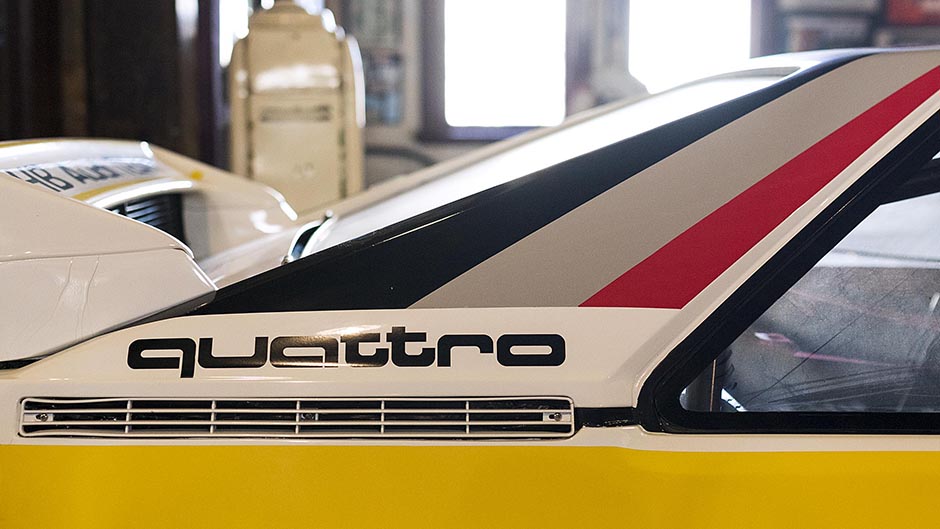
With the 2.0-litre on board pumping out a heady 250 naturally-aspirated horsepower, the Escort came to New Zealand in 1979 in the hands of Ari Vatanen. Finishing third, the Escort remained in New Zealand, joining the local fleet of ‘Masport’ Escort rally weapons.
The Escort also saw action for the 1980 international in the hands of Penti Airikkala, before being put to work both here and Australia. Now restored to 1979 works livery and retaining its original bodyshell, the Escort is on loan to the AutoCollection.
Something of a curve-ball, the Skoda 110L, while not an outright winner is nonetheless an interesting rally addition to the AutoCollection stable. Still very much behind the Iron Curtain during the mid-1970s, Skoda’s introduction to the New Zealand car market came about through an economic arrangement – although the quirky rear-engined Czech vehicles soon earned a reputation for dubious reliability and equally suspect durability.
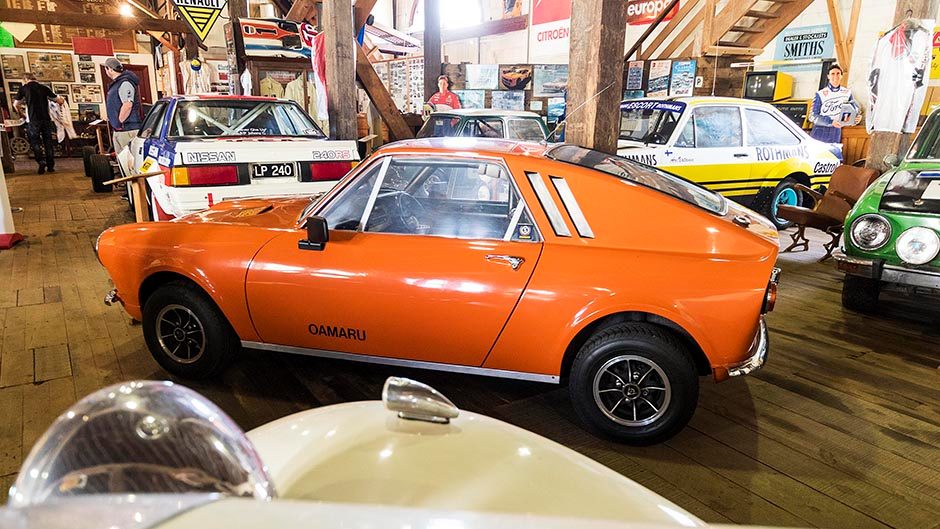
For 1973, four works-built Skoda 110L Rallyes made their way to New Zealand. Each of the cars packed a works-spec 1172cc four-cylinder with a special eight-port head and twin DCOE Webers feeding enough fuel for around 90hp. The particular car in the collection was initially campaigned by 1966 Kiwi circuit champion Dave Simpson, before meandering through its rally life, finally retiring after finishing the 1990 Silver Fern anniversary rally. The car, as it stands, is completely original and has not been restored. Only one other of the four cars remains.
While the international stars undoubtedly hold a wide appeal, the collection also contains a varied array of vehicles tied to local legend. These two cars, the 1964 Cheetah and 1968 Mini DeJoux both belong to Oamaru local John Rush. John was, and still is the proprietor of a local garage and was once the local Toyota dealer, even developing his own performance package for models powered by K-series engines. While in his 20s, John and friend Les Marshall built the first of John’s competition cars, the Cheetah.
With Marshall’s aluminium bodywork evoking the Lotus 23, the Cheetah runs a mid-mounted 997cc Ford Anglia engine mated to a Renault Dauphine transaxle. A featherweight, the Cheetah managed a 16.4 second standing quarter and holds an unbroken sub-50 second record on the gravel Ngapara hillclimb. Eventually sold, the Cheetah passed through several owners (including Allan’s cousin) until the car was bought back by the Rush family relatively recently and restored to prior glory.
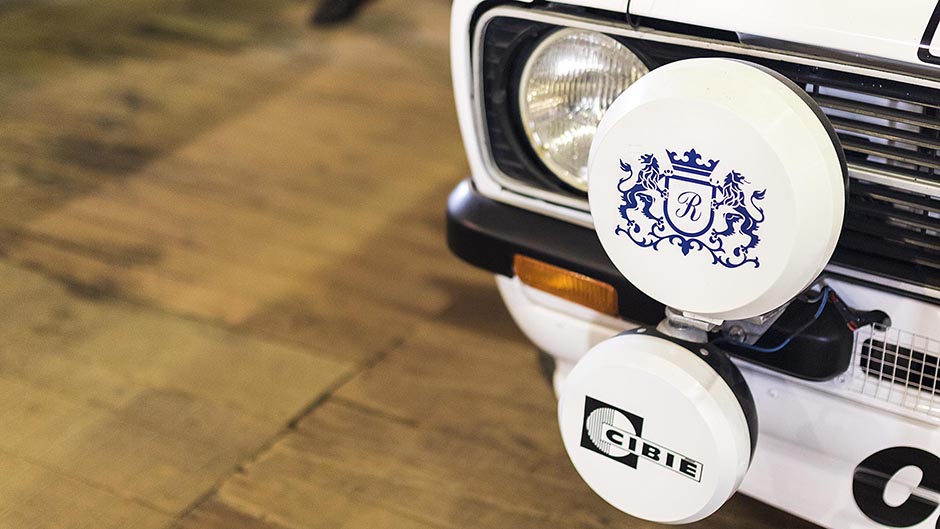
The Mini GT DeJoux takes its name from creator Ferris DeJoux, a renowned New Zealand sports car constructor and engineer. Described in period as “a Mini in a Bermuda jacket,” John constructed the car over a modified Mini chassis, as per DeJoux’s design. The standard Mini floorpan understandably required reinforcement once the original body was removed and the result was a rigid chassis even before the fibreglass body was bonded to the floorpan. Owned since new, John’s DeJoux packs a potent BMC A-series, and was a force on local hillclimbs.


